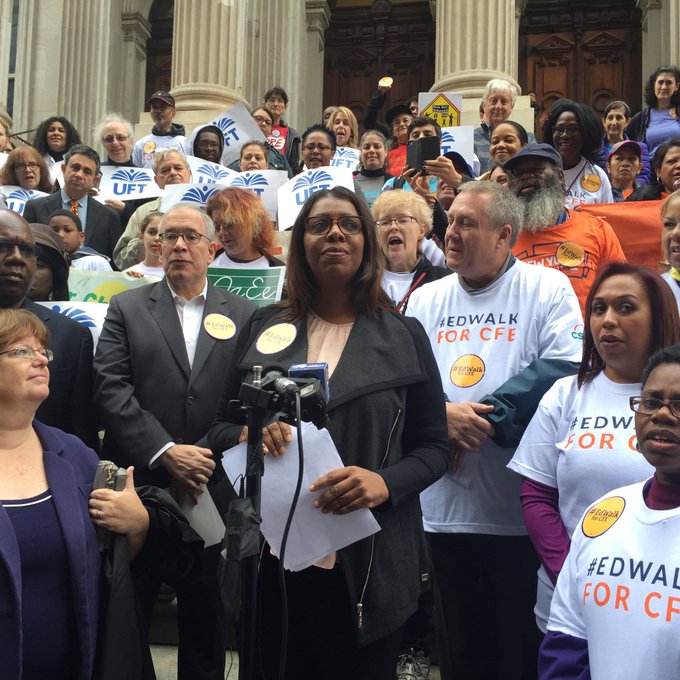Why Are Education Activists Walking to Albany?

For more than a week, a small but determined group of public school advocates, have undertaken an ambitious and heartfelt journey: a walk of 150 miles from New York City to Albany to deliver a message. That message? Pay up. After ten years of delays, excuses, cuts, and broken promises, it is past time for lawmakers and the governor to fully fund the Campaign for Fiscal Equity settlement that was decided in 2006. That landmark ruling, itself the result of 13 years of advocacy and litigation, found that the state was failing its obligation to provide schools with the resources they needed for all children to have a “sound basic education.” Between 2007 and 2009, the state worked out a new foundational aid formula and committed to increasing school aid across the state by 5.5 billion dollars a year.
Today, Albany remains $3.9 billion short of that goal. Every year. Ten years after the court ruled that increased aid was necessary. So activists are walking from the steps of Tweed Courthouse in New York City to Albany to deliver the bill:
Albany has not always been so stubbornly unwilling to pay the Campaign for Fiscal Equity (CFE) settlement. In fact, immediately after the settlement, Albany rewrote the aid formula and began to phase in the additional money, increasing state aid to schools by 2.3 billion dollars. Unfortunately, twin crises for education in the Empire State struck nearly simultaneously. The first was the Great Recession which narrowed state tax revenues and threw the budget out of balance. This was unavoidable given the nature of the fiscal crisis across the entire country. The second crisis was the election of Governor Andrew Cuomo in 2010. This was probably avoidable although it was an open question at the time about just how horrible the governor would be.
Beginning with Governor Cuomo’s predecessor, Governor David Patterson, New York embarked on a two year budget overhaul aimed at reducing state spending by $5 billion in only two years without considering tax increases. State aid to education took an immediate hit both in the total amount allocated and in the form of an accounting gimmick called the Gap Elimination Adjustment. Using the GEA, Albany could announce a school aid budget but then take some of that money back from communities if state revenues were too low. According to theNew York State School Boards Association, by the 2014 school year, this policy, continued by Governor Andrew Cuomo, had cost the state’s schools over $8.5 billion of total aid, or more than $3 million per district per year. Additionally, Governor Cuomo pushed through a property tax cap early in his first term that has squeezed districts from the other side, limiting the revenue they can raise locally. While state aid to school has crept up over time, it was only in this year’s budget address that he suggested ending the GEA by increasing state aid over a Why Are Education Activists Walking to Albany? | Daniel Katz, Ph.D.:






